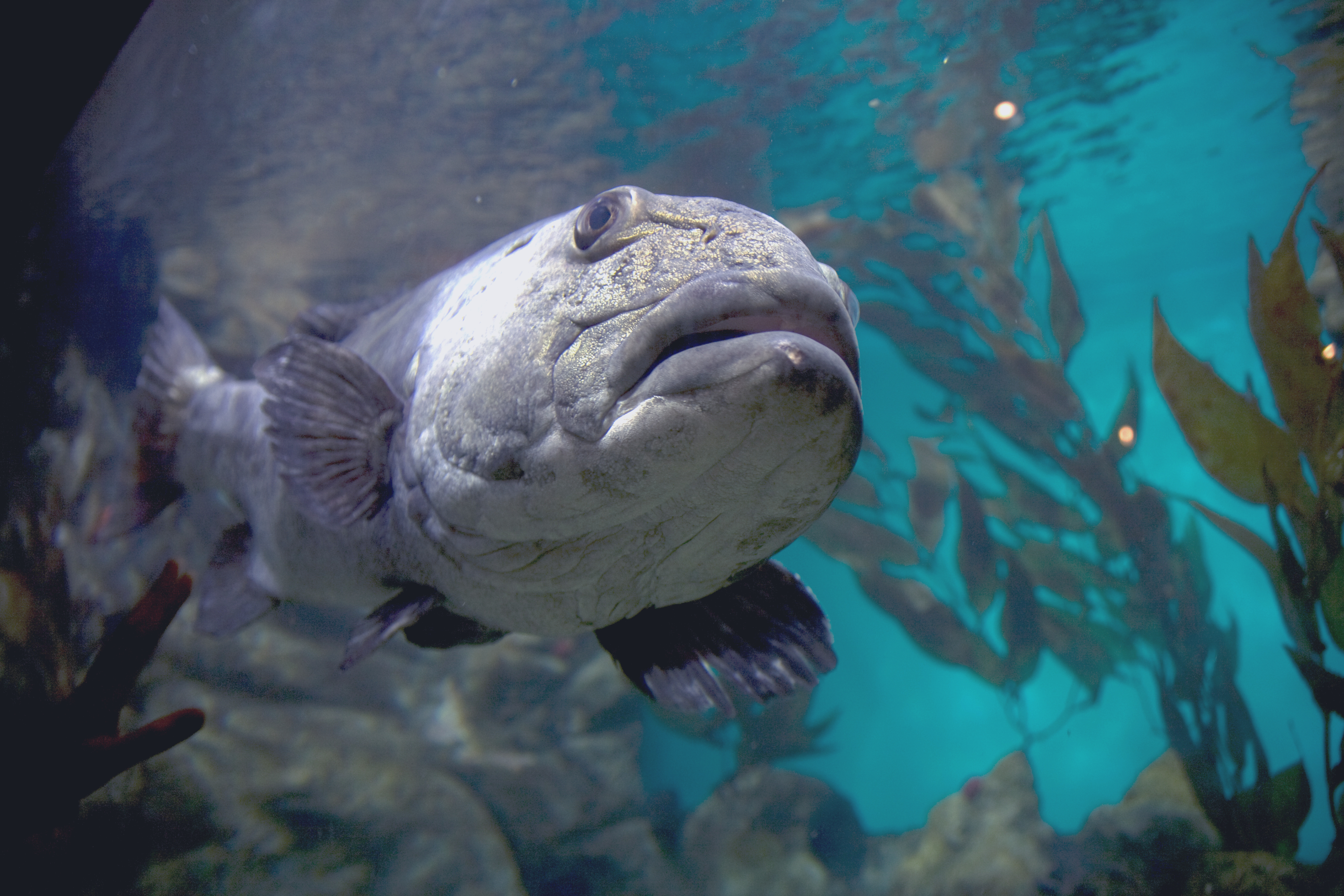Three years ago, CSUN Marine Biology graduate students Emily Ladin and Elizabeth Burns were surprised by the arrival of hundreds of baby giant sea bass, the result of a mating between two fish they’d brought into the lab for a study of mating calls. Some of those “baby giants” made their way back to nature this summer, after years of growth and observation at the Wrigley Marine Science Center at the University of Southern California.
The blessed event in 2019 was the largest captive-breeding success to date for the endangered giant sea bass. The long-lived fish grow to more than 500 pounds, cruising the kelp forests off California’s coast, and their numbers have dropped precipitously under pressure from human activities, including sport fishing. The spawning in CSUN’s lab tank eventually provided enough “baby giants” for a reintroduction of hundreds into the Santa Monica Bay a year later, and some of their siblings went to partner labs at the Cabrillo Marine Aquarium, CSU Long Beach, and WMSC.
Two years later, the three baby giants at WMSC, grown from a few inches to more than two feet in length, have been returned to the sea off the coast of Santa Catalina Island, where the center is located. Pictures and video of the release are available on a new post at the Wrigley Institute for Environmental Studies website. Larry Allen, the CSUN Professor of Marine Biology and longtime student of the giant sea bass whose lab hosted the captive spawning three years ago, estimates that the wild population will need decades to grow to a sustainable and stable level — but monitoring reintroduced fish like these will help biologists learn what the giants need to thrive.
Featured image: A giant sea bass at the California Academy of Sciences aquarium (Flickr: Caitlin Childs)

